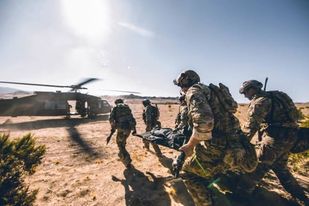MIST.
MIST is an acronym that is used in different capacities by various organisations tailored to suit their capabilities. The average first aider is trained at basic life support (BLS) level, which is where we’ll keep our examples aimed. It is all about keeping things simple stupid (KISS). Yes, another acronym….
M: Mechanism
Mechanism of injury or MOI is where we start. This is where you paint a picture for the responders of what has happened. You need to communicate the what, the where, the when and how of what has occurred. Remember stay to the facts of the situation.
For example;
“We’re at intersection of SH1 and SH29. 2 car T bone car crash, 100 Kph zone, approximately 7:30pm. 2 casualties trapped in vehicle 1. One Casualty walking from vehicle 2”.
Don’t be afraid to update this as you go as the situation changes. It is import to have constant communications. If possible, engage someone around you to be a dedicated “caller”. Their task is to remain on call to dispatch, allowing you to easily notify them if the situation changes.
If you are managing a casualty suffering a medical condition then Time of onset, deterioration/improvement/transience and any history are great picture builders and not typically found in the Military MIST teachings.
A quick note on gun-shot wounds.
Ballistic trauma is a unique MOI, (we wrote about this here!). If you can establish the type of firearm used, ammunition type and distance from the firearm to the patient, this can really assist a the higher end of emergency treatment.
I: Injuries
This is where you break-down what you can see and have assessed. It should be provided in order from the highest to least priority casualty. Use the ‘Four Bs’: life threatening bleeding, then breathing (incl. airway), burns and finally breaks.
If the situation you are dealing with is mass casualty, start at the worst (survivable). To make it easy:
- Priority 1 – Critical. Life threatening injuries or condition.
- Priority 2 – Urgent. Patient is currently stable, but may become unstable.
- Priority 3 – Non urgent. Requires treatment, but no life threatening injury or condition.
- Priority 4 – Dead.
For example;
“Patient 1 has a partial left arm amputation below elbow, compound fracture left leg. They have significant pain in midline.
Patient 2 dislocated left shoulder, large contusion forming in upper left abdominal quadrant, significant pain in midline.
Patient 3 has minor facial lacerations.”
Now, depending on your level of training and confidence, it may sound like the above, or it might sound more simple. Just describe what you see – you don’t need to use fancy terminology. So, for the same example as above:
For example;
“The first person is missing part of their left arm below the elbow. I can see bone coming out of left leg. They’ve got pain in their midline.
The second persons left shoulder looks out of place. There is a lot of swelling below their left ribcage, above their belly button. They’ve got lots of pain in midline.
The third person has minor cuts to their face.”
S: Signs and Symptoms
This is where you list things you’ve observed since you have been on the scene. It forms part of a running commentary as things change/progress.
It helps to remember your level of consciousness pneumonic from basic first aid – AVPU. Alert, responsive to voice, responsive to pain or unresponsive.
It is also useful to take note of the respiration (breathing) rate and sounds.
If the patient is conscious, they will often tell you what their chief complaint is.
Again plain speech is recommended, simply describe what you see with each patient – this is where having a card or template is advised as with a multi casualty incident or mass casualty this can become convoluted quickly.
As an example;
“Patient 1: Level of consciousness is alert. Rapid shallow breathing, skin is pale, cool and clammy to the touch.
Patient 2: Level of consciousness is alert. Breathing rate has been inconsistent.
Patient 3: Nil.”
T: Treatment
This is where you explain what have you done, what are you doing and what are you planning to do. Again, prioritise from most to least significant injuries.
As an example;
“Patient 1 has had a tourniquet applied to left arm, bleeding is controlled. Suspected Spinal Injury (SSI) management in place. Stabilising dressings applied to left leg, treated for shock.
Patient 2: SSI management in place, left shoulder supported, treated for shock.
Patient 3: Nil.
It is important to only treat within your level of competence and confidence. Remember that casualty’s with broken bones (generally) aren’t life threatening. What they can be are ‘distraction injuries’, things that look bad with casualties often making a lot of noise. Try not to be distracted by them and approach the scene as calmly as possible.
Final Note.
Personally, MIST has always worked brilliantly for me in single patient and multiple casualty events.
This is a guide, and may not suit everyone. There are many ways to skin a cat, but this is just another tool for the toolbox. If you are working in a professional medical capacity, you will already have a guide, most likely with an elaboration and further detail that is relevant to your skillset.
Our hope is that this will help you as an individual or as an organisation supply the most timely and accurate information through to dispatchers. It is our goal to have more Kiwis survive preventable deaths and have faster transitions through into recovery and rehabilitation.
Semper Paratus – Always Ready!





